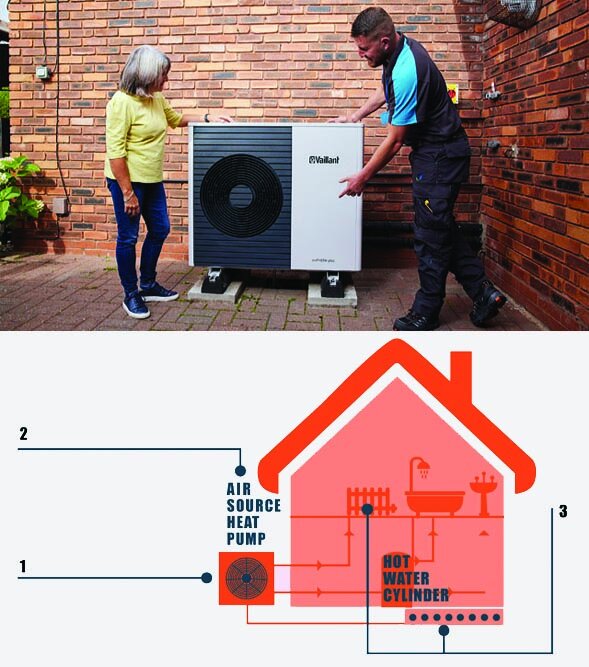Air Source Heat Pumps
In times when energy prices are going up and limits on carbon emissions become ever more onerous, energy efficient heating and hot water systems have gained traction. And with the UK aiming for net zero carbon emissions by 2050 gas boilers are set to become unavailable in the near future so alternatives are a must. Here we take a look at a popular newcomer to this market: Air Source Heat Pumps (aka ASHPs)
Air Source Heat Pump…what exactly is it?
An ASHP is a unit that uses air from outside to heat water for both space heating and hot water fittings. Think large air conditioning unit that works like a fridge in reverse!
Right, so what are the benefits?
They only use electricity and are very energy efficient compared to a typical gas boiler system, particular when paired with underfloor heating systems.
ASHPs also have a lifespan of up to 20 years - nearly twice that of the average gas boiler!
Sounds interesting… What else should I consider?
An ASHP must be installed outside so location should be considered carefully to ensure for good air flow and maintenance access. They do generate low level noise so siting away from opening windows is recommended.
ASHPs cost more than gas boilers but there are incentives that make them affordable, such as 0% VAT and government grants of up to £5,000 in England and Wales, and £7,500 in Scotland. More info on this can be found here: Boiler Upgrade Scheme
To be effective the house needs to be well insulated, otherwise they won’t deliver on the potential cost savings to your energy bills.
An ASHP on it’s own doesn’t generate hot water on demand so it needs to be linked to a cylinder which can store it up for when you need it.
What about planning permission?
As of 2011 the installation of an ASHP on a domestic premises can be done under permitted development, meaning there’s no need to apply for planning permission. However, for houses in conservation areas or listed buildings where permitted development rights have been suspended a planning application will be required so check with your council on this before proceeding.
To comply with permitted development rules an ASHP should be installed such that it has a minimal affect on the appearance and amenity of the property. We recommend somewhere out of sight from others, ie. a rear-facing wall or side alley, and below first floor level.
ASHP units are definitely function over form, but can be concealed behind louvered or slatted screens, subject to air flow not being unduly impeded. Check with the manufacturer what they will allow.
Air Source Heat Pumps…set to become a key player in meeting the heating and hot water requirements for our homes. We hope this guide was helpful, we’ll be back with more eco-friendly solutions soon!

